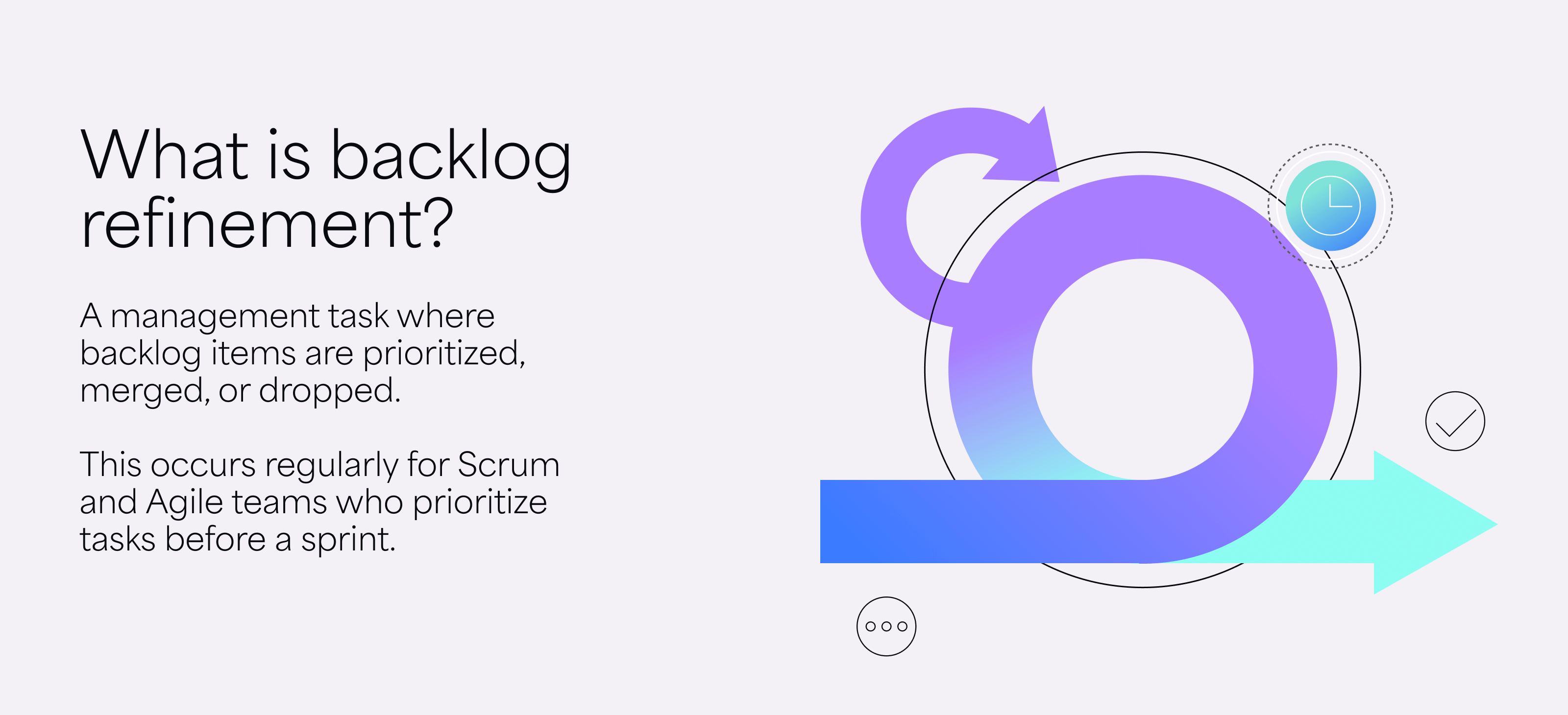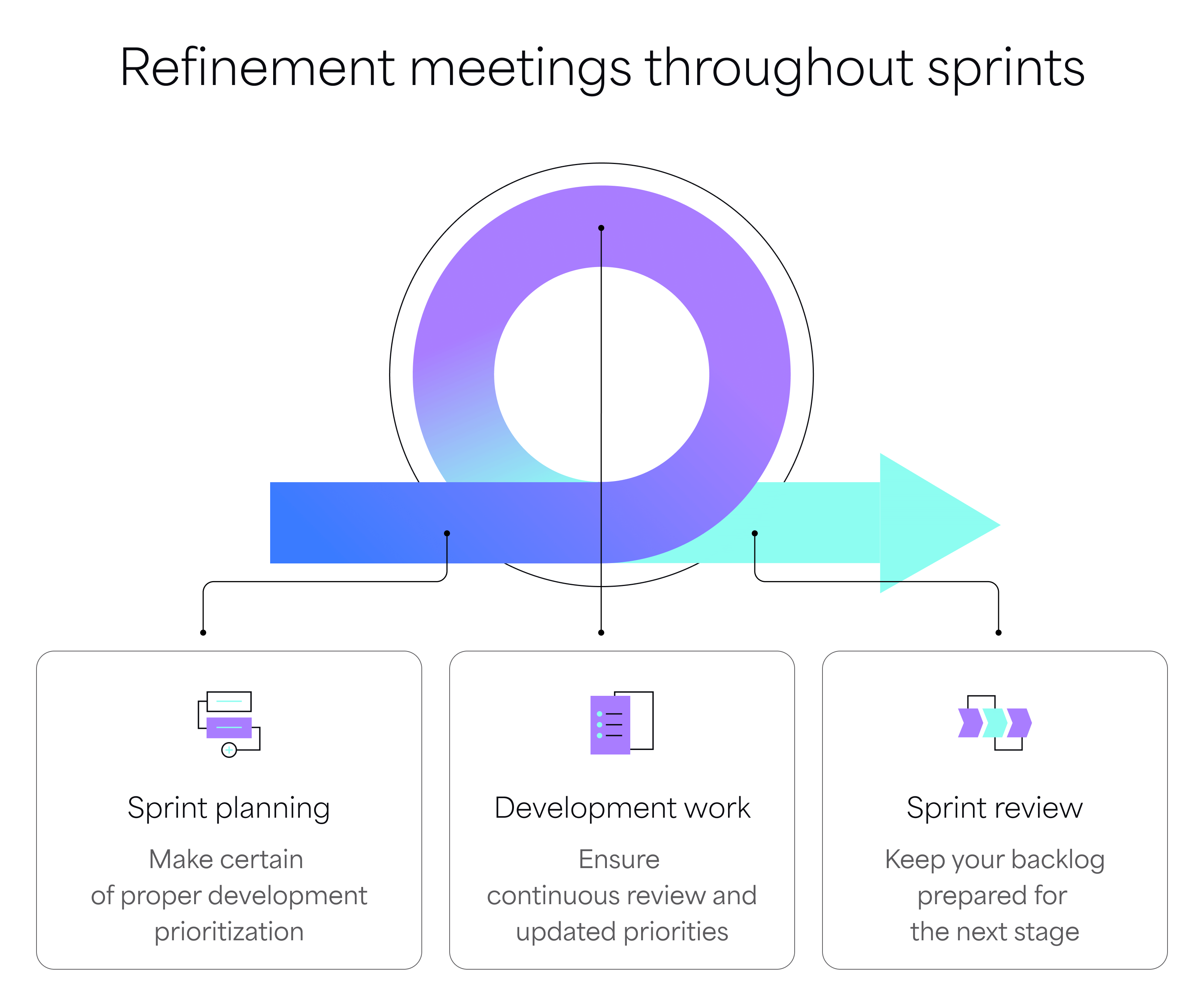![Why backlog refinement isn’t your engineering teams problem and how to fix it]](/_next/image?url=https%3A%2F%2Fappfire-production.nyc3.cdn.digitaloceanspaces.com%2F8d6ffe764941d44ac47fd1dcf89f5ab8.jpg&w=3840&q=75)
Tired of chaotic backlog meetings? Run sessions that actually help your team ship.
The hidden cost of messy backlogs
It’s sprint planning. You’re 20 minutes in and still stuck debating what “ready” means.
One story’s vague. Another has five comments, no acceptance criteria. Half the team’s seeing it for the first time.
This is what happens when refinement gets skipped or done just to check a box.
You burn planning time cleaning up tickets, clarifying context, and guessing what work really means. The sprint starts late, ends fuzzy, and the team’s already annoyed.
And that mess doesn’t stop at planning. Vague backlogs ripple into unclear estimates, missed dependencies, and work that slips through the cracks.
You can fix this and it starts before planning even begins.
What is backlog refinement (and why does it matter)?

Want sprint planning to take half the time and actually set your team up for success? That starts with backlog refinement.
It’s the pre-planning work that turns chaos into clarity. Refinement is where product and dev sync, scope, and sanity-check the backlog, before sprint planning eats your team alive.
No surprises. No vague tickets. No last-minute scrambles.
Backlog refinement gives your team:
- Clarity: stories are scoped, defined, and aligned
- Focus: priorities are stack-ranked, not scattered
- Flow: planning becomes confirmation, not chaos. Teams spend less time debating and more time building.
It’s prep work with a real payoff. If you're exploring metrics to guide your planning practices, check out our post on software engineering metrics.
Refinement done right vs. refinement gone wrong
Refinement is what separates focused teams from flailing ones. Done right, it saves time. Done wrong, it costs sprints.
Let’s break it down.
Refinement gone wrong | Refinement done right | |
|---|---|---|
| The backlog | Bloated, stale, and full of “someday” stories | Prioritized, clean, and scoped to team capacity |
| The stories | Missing details, no consensus, hard to estimate | Clear acceptance criteria, dev + product alignment |
| The session | Long, unfocused, full of debates and rework | Timeboxed, focused, clarifies edge cases instead of creating new ones |
| The outcome | Uncertain velocity, frustrated team, rework mid-sprint | Confident planning, predictable delivery, stronger team trust |
You don’t need more process. You need shared clarity and a backlog that’s actually ready.
How to make backlog refinement fast, useful, and not another meeting slog
Clean refinement sessions don’t happen by accident, they happen when someone decides they’re done wasting another hour in planning limbo.
Too many teams treat refinement like a passive calendar event. It should feel like pre-flight checks, not another meeting to survive.

- Timebox it to 30 minutes max
If it takes longer, you're not refining, you're firefighting.
- Kill or clarify stories older than 2 sprints
If it’s been sitting for 2+ sprints, it’s either unclear or unimportant.
- Bring the right voices
You can’t refine what no one understands. Cross-functional input keeps it grounded.
- Use a shared definition of “ready”
Write it down. Post it in the board. Make “ready” unambiguous.
- Refine based on real delivery data
With tools like Flow, you can spot blockers, monitor scope creep, and understand how much work your team can actually take on, before the sprint starts.
- Don’t backlog-spring-clean
Just prep the next 1–2 sprints. That’s it.
Backlog refinement should clear the runway, not create turbulence.
For more ways to strengthen your agile processes, explore DORA Metrics for Software Teams or dive into 20 Patterns for Data-Driven Leadership.
Make backlog refinement work for your team

Refinement doesn’t have to be a time sink, a debate club, or a last-minute scramble. When it’s done right, it gives your team the clarity to commit and the confidence to actually deliver.
The fix isn’t more meetings. It’s better insight — grounded in team velocity, delivery trends, and planning risk.
That’s what Flow brings to the table.
With Flow, your team can:
- Spot bottlenecks before they derail a sprint
- Keep refinement grounded in reality, not just gut feel
- Use engineering metrics to prioritize and commit with confidence
Refine smarter. Deliver better. See how Flow helps agile teams move faster.
Try Flow